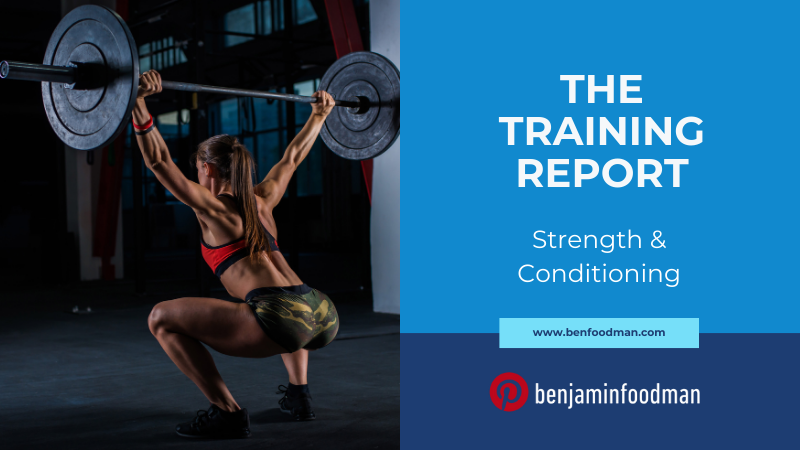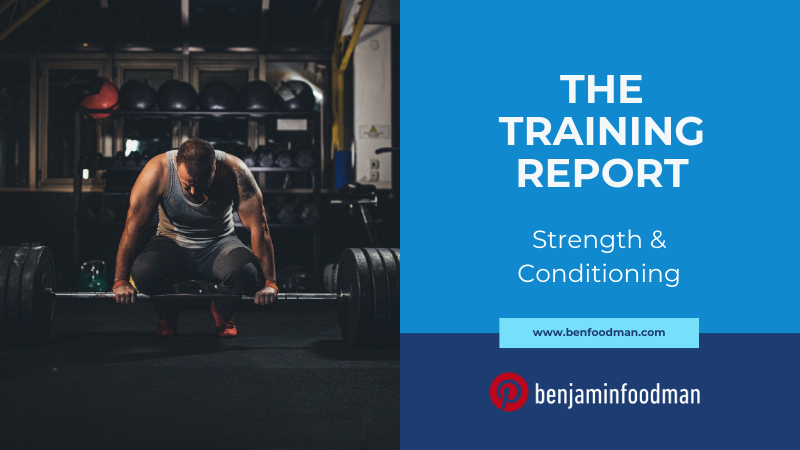Strength & Conditioning - Why Only Elite Athletes Use Olympic-Style Weightlifting / Sample Program Design
About the Author
Ben Foodman is a licensed psychotherapist & performance specialist. He owns his private practice located in Charlotte North Carolina where he specializes in working with athletes to help them overcome mental blocks (the yips), PTSD, ADD / ADHD and achieve flow states through the techniques of Brainspotting & Neurofeedback. If you are interested in services, use the link here! Enjoy the article below!
Introduction: Athletes, Olympic-Style Weightlifting & Peak Performance
While I spend the vast majority of my work helping athletes achieve peak psychological performance, I find that I am still spending a significant amount of time having to talk with my clients about standard strength & conditioning protocols. Even in the age of open source data, there is still a significant amount of individuals who are unsure of how to properly train for their sport. For me, one area of training that remains shockingly underutilized today is Olympic-style weightlifting.
For this Training Report I want to take some time to really sell the benefits of Olympic-style weightlifting. First, I am going to review what Olympic-style weightlifting is. Then I will go into detail about the exercise science principles behind the benefits of performing these lifts. Finally, I will provide a sample program that all athletes can refer to as a template for incorporating into their training regimen. Let’s begin by exploring what these lifts are.
Part I. The Two Most Explosive Exercises Of All Time
Olympic-style weightlifting consists of the snatch & the clean and jerk. I have talked about these lifts & program designs in previous Training Reports, but for today I want to review what these lifts are. The snatch is considered to be the most demanding exercise not only of the two lifts, but to all other exercise movements. This lift is demanding in both athleticism and requires the most explosive power development of any known exercise. In one single movement with no breaks, the athlete holds the bar with a wide grip, and lifts the bar directly over their head.
The clean and jerk is much different compared to the snatch. The clean and jerk requires explosiveness, but is much more of a maximum strength development exercise than the snatch (this lift is only second to the snatch in terms of what it requires in explosive power). The athlete grabs the bar at shoulder length, lifts the bar up to their clavicles (the clean) and then punches the bar over their head in one single motion (the jerk). So what is happening on an anatomy and physiology level that could allow athletes to generate explosiveness through these lifts?
Part II. Athlete Performance & Type II Muscle Fiber Development
There are three main energy systems in the body: the phosphagen energy system; the glycolytic energy system; & the aerobic energy system. All three energy systems are active at all times, but some systems are more active than others depending on the energy demands of the sport. For instance, marathon athletes probably use more of the aerobic energy system, where as an NFL running back will use the phosphagen energy system when completing a 40 yard dash. To recap from previous Training Reports, the phosphagen energy system is usually most active in explosive energy movements, the glycolytic energy system usually deals with energy bouts that are a combination of explosive power and endurance strength; finally the aerobic energy system deals with low levels of power output but high endurance demanding sports.
Even though athletes sometimes use more of one system than another, ALL athletes use some explosive power in their sport. What this means is that Olympic-style weightlifting movements will be the best development tool that an athlete can use to reach their maximum power output capability. Many strength coaches will cite that because the lifts are too technical, it is not necessarily the most efficient to teach from a time perspective. While this may be true (and completely understandable from the strength coaches perspective if they are training hundreds of athletes at once) you as the athlete have to ask yourself how far do you want to push yourself? And if the answer is as far as possible, then there is no alternative to this lift. No other exercise recruits Type II B muscle fibers the way the Olympic-style weightlifting movements do, due to the fact that these muscle fibers (which are primarily responsible for explosive movements) have such a high threshold for recruitment (meaning it takes significant external stimulation i.e. heavy weights, to get these muscle fibers in the game). So how can any athlete program this into their training regimen?
Part III. Sample Olympic-Style Weightlifting Micro-Cycle Program Design For All Athletes
(Disclaimer: This is an opinion piece and not a specific exercise prescription. Consult with your physician & healthcare provider before using. Make sure to consult in person with your CSCS as well)
Active Warm Up - 3 x 10 Per Warm Up Movement (side line leg raise, hand to pocket, heal taps, bridge, side plank, dead bugs)
Barbell Warm Up - 3 x 6-8 For Power Snatch From The Floor Followed By Overhead Squats
Power Snatch - 4 x 2-3 @ 80% intensity work up
Power Clean + Power Jerk - 4 x 2 @ 80% intensity work up
Back Squat - 4 x 5 @ 75-85% intensity work up
Active Cool Down / PVC Pipe Rolling
Note To Reader:
If you are an athlete reading this segment of the TRAINING REPORT, hopefully this content was helpful! I put the Training Report together because I felt like many of the discussions on issues such as the Yips/mental blocks, strength training & other subject matter on athlete performance concepts were really missing the mark on these ideas (e.g. how trauma is the direct cause of the Yips). If you are interested in learning more, make sure to subscribe below for when I put out new content on issues related to sport psychology & athlete performance! Also, if you are looking to work with a mental performance specialist, you are in the right place! USE THIS LINK to reach out to me to see if my services are the right fit for your goals!
ARE YOU ON THE LIST?
Make sure you’re signed up to Ben’s mailing list to receive news & updates on new strategies in sport psychology, upcoming workshops & products. Don’t wait, sign up now!


























